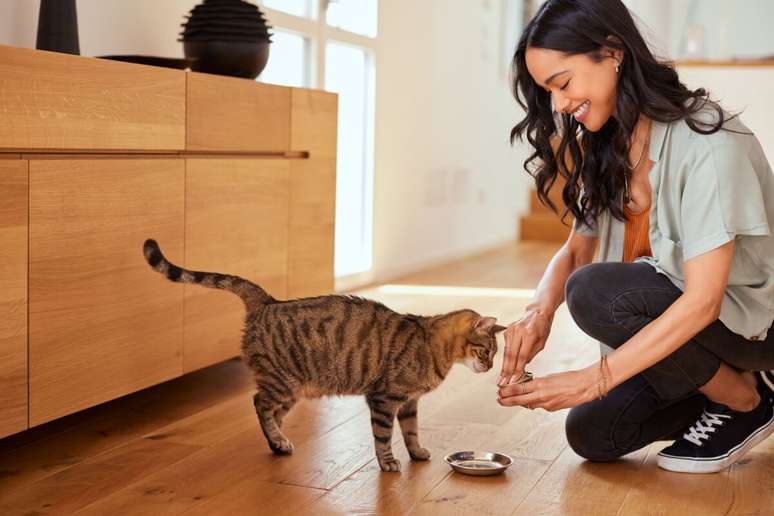Guaranteeing the health and well -being of feline requires particular attention to weight, preventing the problems associated with obesity
Overweight cats have become an increasingly common problem. According to Banfield Pet Hospital data, a network of US veterinary care, the number of overweight or obesity cats grew by 114%, jumping from 18% in 2011 to 38% in 2020.
However, this can significantly compromise feline health, increasing the risk of diseases such as diabetes, joint problems, liver and cardiovascular dysfunctions. Overweight can also reduce the mobility of the animal, making simple activities difficult and contributing to a vicious circle of physical inactivity. In addition, obese cats tend to have a lower life expectancy.
Therefore, the adoption of healthy habits is essential to avoid overweight or obesity in the animal and therefore guarantee health and well -being. So, take a look at some suggestions to keep the cat in the right weight!
1. Perform regular visits to the vet
Regular consultations with the vet are essential to ensure that the cat It remains in adequate weight, promoting health and well -being. This is because the professional can evaluate the physical state of the animal, identify possible health problems and guide the most appropriate diet, considering factors such as age, race, level of activities and specific conditions.
2. Offer a balanced diet
The choice of the right food is one of the most important steps to ensure the adequate weight of the cat. For this, it is essential to opt for high quality feed or foods, specifically formulated for the age, size and health conditions of the feline. In addition, it is essential to consult a veterinarian to determine the ideal quantity of food for meal.

3. Establish fixed times for food
Keeping a normal food routine helps to control the cat’s calorie intake. For this, share the recommended amount of food In two or three daily meals and offer the same times every day. This helps to prevent the feline from eating uncontrollablely, promoting a better energy balance.
4. Check the snacks
Although they are a way to please the cat, snacks should be offered in moderation. You prefer healthy and specific options for felines, checking the amount of calories from each product. In addition, use as a reward at stake or training, ensuring that they do not exceed 10% of the daily calorie intake. However, you should avoid offering human foods, since many of them are rich in calories and do not meet the nutritional needs of PET.
5. Encourage physical activities
Sedentary cats are more likely to increase weight. So, play every day with the feline, using toys Interactive as chopsticks with feathers, balls or circuits of activity. Encourage it to run and jump to make sure you spend power.
In addition, a stimulating environment is essential for cats living in the internal spaces. Graffinia, climb the shelves, hiding places and automatic toys help to maintain the feline mentally involved and physically active. These interactions also reduce stress, which can be a factor for food binge and weight gain.
Source: Terra
Ben Stock is a lifestyle journalist and author at Gossipify. He writes about topics such as health, wellness, travel, food and home decor. He provides practical advice and inspiration to improve well-being, keeps readers up to date with latest lifestyle news and trends, known for his engaging writing style, in-depth analysis and unique perspectives.








